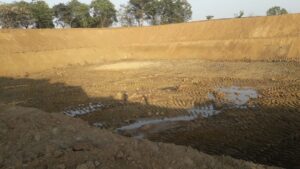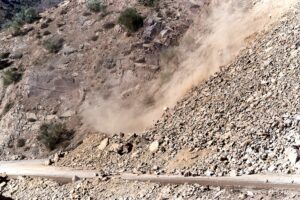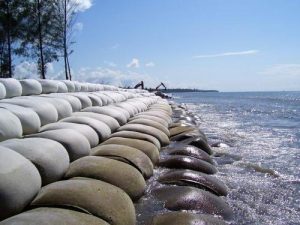Case Study: Bioenergy Project in Chhatrapati Sambhajinagar, Maharashtra
Introduction
As the world focuses on sustainable energy solutions, bioenergy has emerged as a critical alternative to fossil fuels. Bioenergy, derived from organic materials, offers renewable and eco-friendly energy. One such project undertaken in Chhatrapati Sambhajinagar, Maharashtra, involved the development of a bioenergy facility where our company, Ocean Non Wovens, played a crucial role by supplying and installing Ocean HDPE Liner-1500 micron across 8000 square meters. This liner was essential in constructing a durable, leak-proof containment system.
Table of Contents
Importance of Geosynthetics in Bioenergy Projects
Bioenergy projects rely heavily on materials that offer long-term stability, environmental safety, and durability. The containment systems in bioenergy plants, especially in biodigesters and waste management, require robust liners that prevent leakage, protect the surrounding soil, and ensure efficient waste management. Our Ocean HDPE Liner-1500 micron played an integral role in this aspect, helping to create a secure foundation for the bioenergy facility.
Ocean HDPE Liner-1500 Micron: A Superior Solution
The Ocean HDPE Liner-1500 micron is a high-density polyethylene (HDPE) geomembrane designed for industrial applications, including bioenergy plants. With a thickness of 1500 microns, it provides exceptional strength and flexibility, making it ideal for environments requiring reliable leak protection and durability.
- Key Features of the Ocean HDPE Liner-1500 Micron:
- High Chemical Resistance: HDPE liners are resistant to a wide range of chemicals, ensuring the bioenergy plant’s waste management system does not degrade over time.
- UV and Weather Resistance: The liner is designed to withstand UV exposure and extreme weather conditions.
- Tear Resistance: This liner has excellent tensile strength, making it resistant to tears and punctures.
Application in the Bioenergy Plant
In bioenergy facilities, especially those involving anaerobic digestion, the Ocean HDPE Liner serves multiple purposes. The containment areas where organic waste is broken down generate gases like methane, which can be harmful to the environment if not properly managed. The Ocean HDPE Liner ensures that these gases and other byproducts are contained, preventing leakage and groundwater contamination.
Advantages of Using Geosynthetics in Bioenergy Projects
Environmental Safety: Using liners like our Ocean HDPE Liner-1500 micron ensures environmental protection from contaminants.
Cost Efficiency: HDPE liners reduce maintenance costs and minimize leakage risks, offering long-term savings.
Enhanced Project Longevity: The liner’s durability enhances the plant’s operational lifespan.
Unspoken Challenges in Bioenergy Projects
One of the lesser-discussed aspects of bioenergy projects is the risk of liner degradation due to the high organic content of the waste processed. Many companies fail to mention the challenges that arise from fluctuating temperatures and microbial activity, both of which can cause standard liners to deteriorate quickly. However, Ocean HDPE Liner-1500 micron has been tested to withstand these conditions, ensuring its structural integrity.
Project Overview
The Bioenergy Project in Chhatrapati Sambhajinagar involved constructing a waste containment system using the Ocean HDPE Liner-1500 micron across 8000 Sqm. Our team ensured proper installation, adhering to environmental standards and regulations. The liner’s flexibility and tear resistance were invaluable in uneven terrain and harsh site conditions.
At Ocean Non Wovens, we pride ourselves on delivering top-notch geosynthetic solutions for diverse industries, including bioenergy. Our Ocean HDPE Liner-1500 micron is a testament to our commitment to quality, durability, and environmental responsibility. Whether you’re working on large-scale industrial projects or eco-friendly energy solutions, our products ensure the highest standards of protection and performance.



